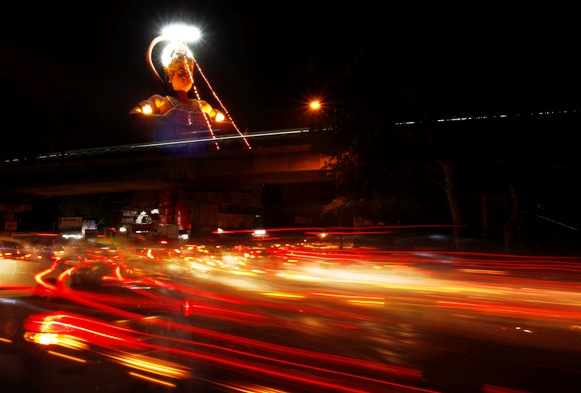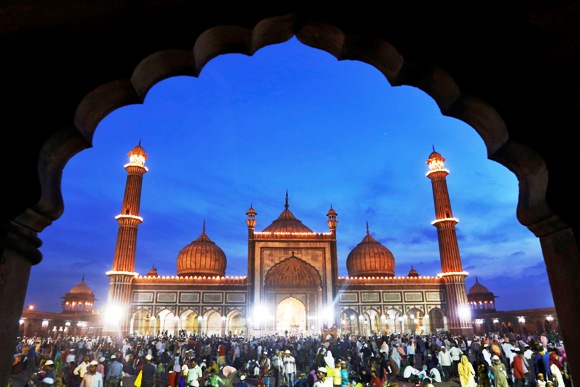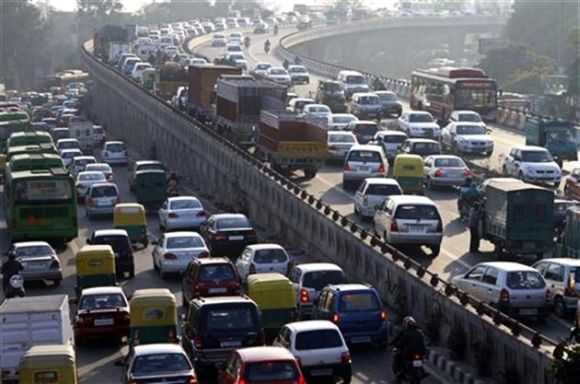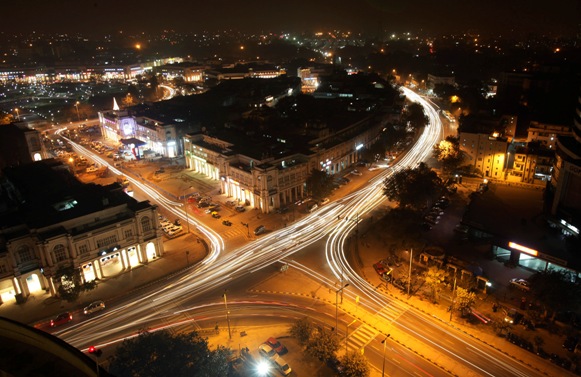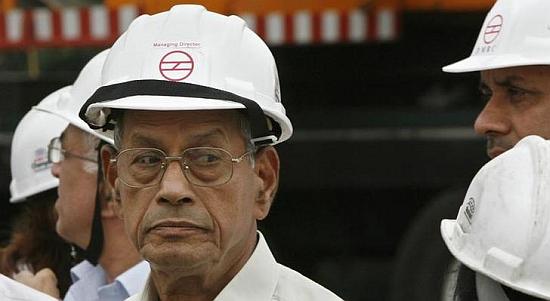 | « Back to article | Print this article |
Delhi's public transport: Are buses better than the Metro?
Picture an airport runway in the heart of south Delhi. That’s Harvinder Singh Kalra’s office, a runway-like bus depot housing his new orange buses.
Scratch Kalra’s hardened ‘I-am-just-a-businessman’ surface, and his views come across. “It’s ok to promote the metro and I am all for it but buses alone can provide connectivity when people criss-cross or go in different directions.
“The metro can give you only point-to-point transit,” he says, grabbing a pen and paper and explaining diagrammatically how people move in Delhi, and why the metro and bus systems should work in tandem.
Kalra, 56, not related to this reporter, has been in this business for 30 years, in a previous avatar as a Blueline bus owner, part of a system now phased out.
Click NEXT to read further. . .
Delhi's public transport: Are buses better than the Metro?
In recent months, he has partnered the Delhi government in its new cluster bus scheme, through which the 11,000 buses in Delhi would be divided equally between Delhi Transport Corporation, which has ruled the city’s roads for what seems like forever, and 17 clusters, based on the direction of travel.
The buses under the cluster system would be run through the public-private partnership model and this is where Kalra comes in.
After a failed effort
The cluster buses represent the city government’s move to do away with Blueline buses, a failed effort to privatise the capital’s bus transport.
The government has taken away the responsibility of fare collection from bus owners; it also hopes to take away the incentive to have buses compete with others on the same route, something that led to rash driving and accidents in the past.
In the cluster system, bus owners such as Kalra present bids, after calculating the per-km cost of plying their vehicles.
Click NEXT to read further. . .
Delhi's public transport: Are buses better than the Metro?
The Delhi Integrated Multi-Modal Transit System Ltd, another PPP, appoints conductors, collects fares and compensates bus owners, based on the per-km cost they quote.
DMITS, a joint venture between the Delhi government and the IDFC Foundation, also functions as a bus monitor, tracking delays or deviations with the help of global positioning systems.
Of the three cluster owners Business Standard tried to contact, Kalra was the only one who agreed to a request for an interview.
The two other clusters, one owned by slain businessman Ponty Chadha’s company, and Star Bus alliance, headed by Ajay Singh, didn’t respond to phone calls.
Kalra, whose cluster has 186 orange non air-conditioned buses on the roads, appreciates the new system.
So do his customers.
Click NEXT to read further. . .
Delhi's public transport: Are buses better than the Metro?
Swati Bhatt, 19, an undergraduate student at Delhi University, commutes from Ghaziabad to a south campus college by changing three orange buses on a one-way journey.
Unlike many of her counterparts, Bhatt is fonder of buses than the metro, which she finds claustrophobic.
She says the city’s bus system has improved tremendously.
“The frequency is more -- a bus arrives every five minutes.
“They don’t try to speed, and the service is good.
The conductor tries to help with information,” she adds.
Bhatt’s manner of commuting is what experts favour for cities, as this helps avoid traffic jams, road rage and pollution.
In some countries, roadway occupany is expected to increase six-fold, according to a July report by an organisation that works for clean energy for its 28 developed country members.
Click NEXT to read further. . .
Delhi's public transport: Are buses better than the Metro?
“The need for efficient, affordable, safe and high-capacity transport solutions will become more acute,” Maria van der Hoeven, director of the International Energy Agency, was quoted as saying by National Geographic.
Experts the magazine quoted were critical of how many fast-growing cities in India, China and Africa were headed the wrong way, towards the old car-oriented paradigm, though some were overhauling public transport.
Very, very low
A DIMTS official in-charge of clusters said a bus made about Rs 7,000 a day.
Kalra declines to discuss how much of that he collects on his fleet of 186 buses.
He is paid on the basis of km and hours, after deducting penalties for delays.
“Our profit margins are very, very low,” said Kalra.
“We needed the job badly. This is our business.
“Once the Bluelines stopped, we were without a job. So, when the Delhi government advertised, we bid.”
Click NEXT to read further. . .
Delhi's public transport: Are buses better than the Metro?
He says his primary concerns are the shortage of drivers during festivals and water-logging on Delhi roads, when a bus could be stuck for hours.
“I face the problems a normal businessman faces,” he says, citing instalments he has to pay for the next eight years on new buses he has bought from Tata Marcopolo Motors, a joint venture of Tata Motors and a Brazilian company.
He points out new bus clusters aren’t coming up, as there is a shortage of land for depots.
The bus cluster system
- Replaces private Blueline buses with a public-private partnership
- Fares collected by Delhi Integrated Multi-Modal Transit System Ltd, shared with bus owners on per-kilometre and hours basis, with deductions for delays
- Total about 11,000 buses
- Half to be run by DTC, half under the PPP model in 17 clusters
- Right now, five clusters are active, of which Harvinder Singh Kalra (pictured) owns one
- A bus-cluster owner should have the capacity to scale up to 230-250 buses

